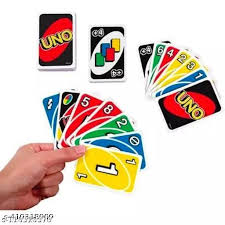UNO Game, is more than just a card game; it’s a beloved classic that has brought friends and families together for decades. With its simple rules, colorful cards, and strategic gameplay, UNO appeals to players of all ages, making it a staple in homes, parties, and game nights around the world. This article explores the origins of UNO, its gameplay mechanics, and its enduring popularity in today’s gaming landscape.
A Brief History of UNO
UNO was created in 1971 by Merle Robbins, a barber from Ohio, who sought to create a fun family card game that was easy to learn. Robbins initially designed the game to resolve conflicts over the game Crazy Eights, and it quickly gained popularity among his family and friends. After refining the game, he and his family decided to produce it commercially. In 1972, UNO was officially published by International Games and later acquired by Mattel in 1992. Since then, it has sold millions of copies and has become a global phenomenon.
Gameplay Mechanics
UNO is typically played with a standard deck of 108 cards, consisting of four colors (red, blue, green, and yellow), each featuring numbers from 0 to 9 and special action cards. Here’s a breakdown of the game’s mechanics:
- Objective: The main goal of UNO is to be the first player to reach 500 points by playing all your cards before your opponents. Points are scored based on the cards left in your opponents’ hands.
- Setup: Players start with seven cards each, and the remaining cards form a draw pile. The top card is flipped over to create a discard pile.
- Playing Cards: Players take turns matching a card from their hand to the card on the discard pile by color or number. If they cannot play a card, they must draw one from the draw pile. If the drawn card can be played, the player may do so immediately.
- Action Cards: The game features special action cards that add strategic elements:
- Skip: The next player loses their turn.
- Reverse: Reverses the direction of play.
- Draw Two: The next player must draw two cards and lose their turn.
- Wild: The player can change the current color being played.
- Wild Draw Four: The player changes the color and forces the next player to draw four cards (can only be played if the player has no cards of the current color).
- Calling “UNO”: When a player has only one card left, they must call “UNO.” If another player catches them not saying it before the next turn, they must draw two penalty cards.
The Enduring Appeal of UNO
UNO’s charm lies in its simplicity and accessibility. Here are some factors that contribute to its lasting popularity:
- Easy to Learn: The straightforward rules make it easy for new players to join in, regardless of age or gaming experience.
- Social Interaction: UNO encourages social interaction and light-hearted competition. The game often leads to playful banter and memorable moments among friends and family.
- Variety of Game Modes: Over the years, various versions and expansions of UNO have been released, including themed decks, digital adaptations, and alternative rule sets, keeping the game fresh and engaging.
- Cultural Impact: UNO has permeated popular culture, appearing in movies, TV shows, and even on social media. Its recognizable cards and gameplay have made it a symbol of family fun and camaraderie.
Digital Adaptations and Future of UNO
With the rise of technology, UNO has transitioned to the digital realm. Numerous apps and online versions allow players to enjoy the game remotely, connecting friends and family across distances. These digital versions often include new features, such as customizable rules and online tournaments, appealing to a new generation of players.
Conclusion
UNO remains a timeless classic that continues to unite players across generations. Its combination of simplicity, strategic gameplay, and social interaction makes it a staple for game nights and gatherings. Whether played with a traditional deck or in its digital form, UNO provides endless entertainment and laughter, solidifying its place as one of the most beloved card games in history. So gather your friends, shuffle the deck, and get ready to shout “UNO!” as you enjoy this enduring favorite.




